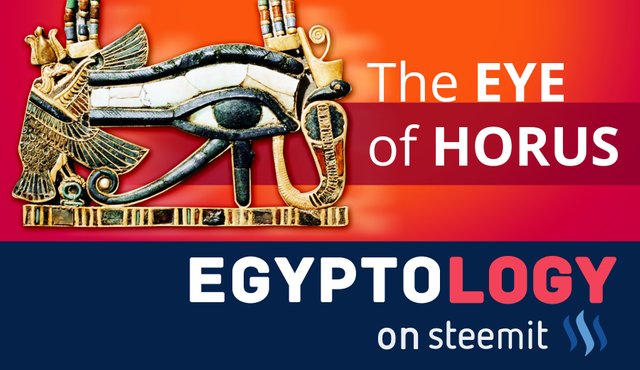
Many people know the so-called „Horus Eye“ and think this is the same as the „Eye of Ra“ or similar. The symbolism of the one (broken) eye caused especially in modern times some conspiratorially rumours when secret societies seem to use this for their self-image and nobody really knows why. With this article I want to bring some light into the confusion – at least from a historical perspective and want to encourage you, my dear readers, to share your personal thoughts on that.
The Myths of the Two Eyes
The thinking of the Ancient Egyptians was in general directed and expressed by the use of images and symbols. But their often metaphorical meaning is not always clear to us and their belief system experienced consistently changes during the times. Ideas and mythological stories sometimes merged into one another, so for Egyptologists it is often really hard to differentiate between them or even find out their origins. But there is something that can be seen as a continuous concept of how the world works for the Ancient Egyptian: There was once a unity that separated in (at least) two parts. So here we have the well-known perception of Singularity versus Duality. And since the Ancient Egyptians always used their environment as a resource for making thoughts visible, they depicted this concept in (dual) natural phenomena. Every person has two eyes, two nostrils, two arms, 2 legs. And so the left and the right eye had a special meaning and are also connected with different mythological stories, the „Tales of the eye“.[1] In the following you see an overview of the assignments:
| Left Eye | Right Eye |
|---|---|
| South | North |
| Upper Egypt | Lower Egypt (Delta) |
| East | West |
| Goddess Uto (Cobra) 𓆗 | Goddess Nekhbet (Vulture) 𓅐 |
Table 1: Additional note – As you can see in the editorial picture above, the Udjat / Horus Eye is framed by the two Goddesses Nekhbet & Uto.
The sun eye
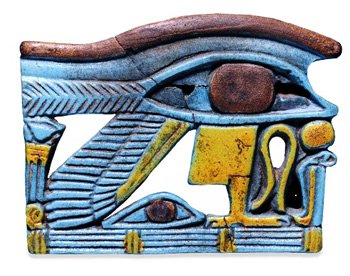
The Moon Eye
There are tales that describe how Horus, the son of Isis and Osiris, fought a hard battle with his opponent Seth and in the meantime lost his eye. The God Thoth, who is also the patron of the physicians and healers, replenished this eye in the same way like the moon is „filled up“ during a month. So, the Horus Eye is often used as a synonym for a broken but healed eye and symbolizes the cyclic growing and passing away of the moon.[2]
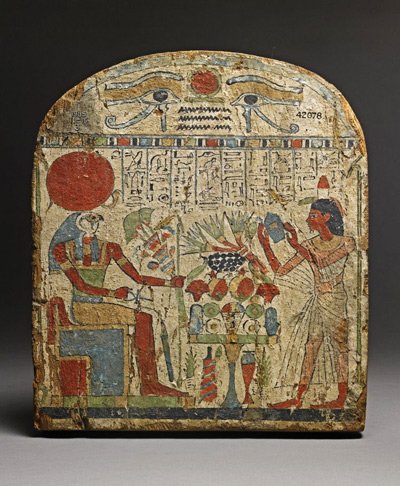
1) The Udjat Eye as the healed Horus Eye became a direct symbol of the pharaonic power. The king was responsible for the stability and safety of his people. By using Udjat Eyes they gave strength and potency to the owner.
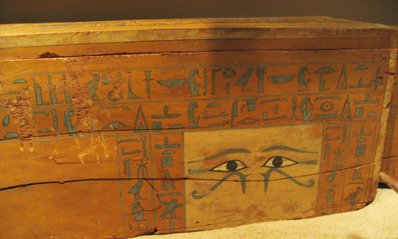
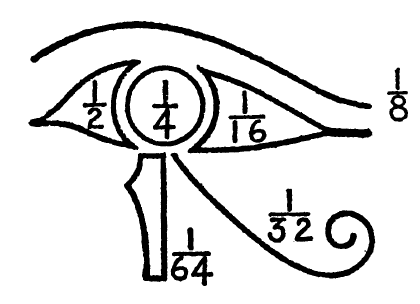
Discussion
As you can see now - there is not only one story and not only one „truth“ about the Horus Eye. Especially the fact, that the Ancient Egyptians obviously knew the concept of a „third“ eye is, at least for me, a very interesting fact, that is worth further studies. What do you think about it?
Notes and Sources:
[4] This scientific perspective is now being discussed in a different way by scholars who don’t see a connection between the Udjat Eye and the capacity system in Ancient Egypt. For further reading, see: Ritter, Jim, Closing the Eye of Horus: The Rise and Fall of Horus-Eye Fractions. in: Steele, John M., and Imhausen, Annette (eds.): Under One Sky: Astronomy and Mathematics in the Ancient Near East; Alter Orient und Altes Testament No. 297, Münster 2003, pp. 298–323.
[1] Otto, Eberhard, in: Lexikon der Ägyptologie I, 1975, col. 562–567, s.v. Augensagen.
[2] Westendorf, Wolfhart, in: Lexikon der Ägyptologie III, 1980, col. 48–51, s.v. Horus-Auge.
[3] Müller-Winkler, Claudia, in: Lexikon der Ägyptologie VI, 1986, col. 824–826, s.v. Udjat-Auge.
Images:
Image used in the editorial picture, Pectoral (amulett necklace) of Tutankhamun, © National Geographic Society 2008.
Image 1: British Museum EA29222 SourceImage 2: stela Source
Image 3: coffin Source
Image 4: Gardiner, Alan, Egyptian Grammar, Oxford 1927, p. 197.

If you liked this article, please follow me on my blog @laylahsophia. I am a german Egyptologist writing about ancient and contemporary Egypt, history of science, philosophy and life.
Great content as always! :)
Downvoting a post can decrease pending rewards and make it less visible. Common reasons:
Submit
BRILLIANT!!!!!!
Downvoting a post can decrease pending rewards and make it less visible. Common reasons:
Submit
Thank you! 𓆸
Downvoting a post can decrease pending rewards and make it less visible. Common reasons:
Submit
InDeeD Great Article, Well Written Within the Wisdom of Sophia , Especially what caught ones attention as a Mighty Falcon does is the Udjat eye ......It has InDeeD, InDEED stimulated my Very Own "PituiTary Gland"........a Little Help of Course Via the Pineal.
Thank You Kindly
Downvoting a post can decrease pending rewards and make it less visible. Common reasons:
Submit
Lovely article it was interesting
Downvoting a post can decrease pending rewards and make it less visible. Common reasons:
Submit
I can't wait to go to Egypt! I followed you for more steemy Egyptian content :-)
Downvoting a post can decrease pending rewards and make it less visible. Common reasons:
Submit
You are welcome to visit Egypt. I can warmly recommend it to you. :)
Downvoting a post can decrease pending rewards and make it less visible. Common reasons:
Submit
Great article, well researched. It bugs me when people make spurious associations about this symbol. Few people take the time to understand these things as you have.
Downvoting a post can decrease pending rewards and make it less visible. Common reasons:
Submit
a very interesting post to read..
Downvoting a post can decrease pending rewards and make it less visible. Common reasons:
Submit
This post received an upvote from steemit user . If you would like to receive up-votes from users on all your posts, simply FOLLOW @itsolutions.
Downvoting a post can decrease pending rewards and make it less visible. Common reasons:
Submit
This post received an upvote from steemit user . If you would like to receive up-votes from users on all your posts, simply FOLLOW @itsolutions.
Downvoting a post can decrease pending rewards and make it less visible. Common reasons:
Submit
Subject of interest for me! Learned a thing or two. Very nice!
Downvoting a post can decrease pending rewards and make it less visible. Common reasons:
Submit
Very nice post on Egypt.
Checkout my post on ancient Egypt: https://steemit.com/egyptfacts/@mukulsharma/9-unbelievable-facts-about-ancient-egypt
Downvoting a post can decrease pending rewards and make it less visible. Common reasons:
Submit